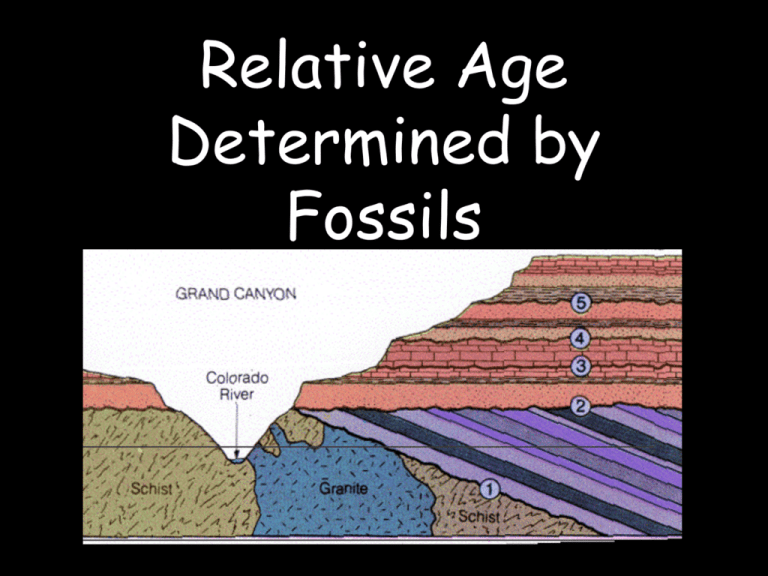Relative Age
advertisement

Relative Age Determined by Fossils What is Relative Age? • Relative Age = Means the age of one object compared to the age of another object. • Relative age of rocks and fossils are determined by: – Ordering of rock layers – Index fossils Ordering of Rock Layers • Each layer of rock is deposited on top of other layers. • The Law of Superposition states that each rock layer is older than the one above it. • The relative age of rock or fossil is older if farther down in the rock layers. • Relative dating can be used only when rock layers have been preserved in their original sequence. Law of Superposition Index Fossils • Certain fossils can be used to find the relative age of rock layers. • To be an index fossil: – An organism must have lived only during a short part of Earth’s history. – Many fossils of the organism must be found in rock layers. – The fossil must be found over a wide area of Earth. – The organism must be unique. Trilobites • The shorter time period a species lived, the better an index it is. • Trilobites are a key example of an index fossil organism. • Trilobites are hard shelled animals whose body had three sections, lived in shallow seas, and became extinct about 245 million years ago. • If a trilobite is found in a particular rock layer, it can be compared with trilobites from other layers to estimate the age of the layer in which it is found. • Fossils that are found in many rock layers, therefore living long periods of time, do not qualify as index fossils.






